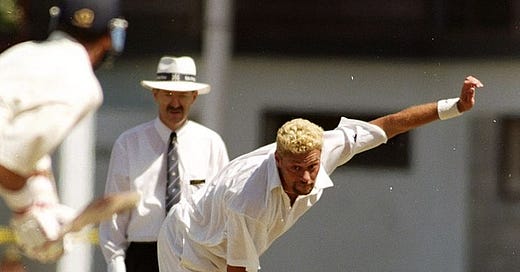Heath Davis: A hidden treasure
Documentary brings back rich memories, PLUS: Irrelevant Comm Games and criticism of NZR goes too far (wait... what?!)
The Spinoff yesterday released their latest episode of Scratched, the brilliant web series highlighting lost sporting legends of Aotearoa.
The subject was Heath Davis, the mercurial fast bowler who made scattered appearances for the Black Caps during the dark cricketing days of the 1990s.
It was funny, poignant and revelatory.
Most of all the f…
Keep reading with a 7-day free trial
Subscribe to The Bounce to keep reading this post and get 7 days of free access to the full post archives.




